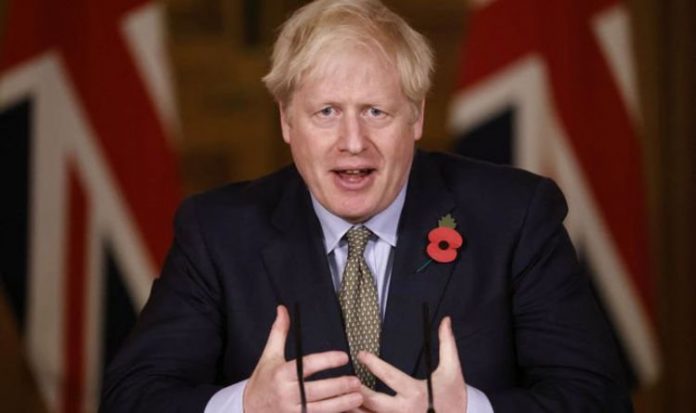The Government is today expected to announce that “high” or “very high” Covid-19 alert levels will be imposed on almost all of England when the national lockdown ends next Wednesday. It will mean the ban on indoor household mixing remains in force across much of the country, while pubs and restaurants will be allowed to offer only takeaway service in many areas. But the Prime Minister last night told a private meeting of Tory backbenchers that a vaccine rollout and testing should see the restrictions eased.
He sought to provide reassurance after more than 100 of his MPs raised concerns about the toughened-up three tier regime.
Mr Johnson told the meeting of the 1922 Committee of backbench Tories: “Between now and Easter we will use these two utensils steadily to come out of the measures we are going into.”
He compared the gradual easing of local restrictions to “steadily starting to insert graphite rods into a nuclear reactor”. He added: “By gradually finding more and more people and testing them and also vaccinating the vulnerable it will make a huge difference over the next few months.”
The recently formed Covid Recovery Group consists of Tory MPs sceptical about lockdown measures. Yesterday they were alarmed when an Office for Budget Responsibility document appeared to confirm that most of England will be put under the top two Covid Alert tiers of restriction for months.
It showed that economic forecasts used by the Chancellor for the spending plans assumed most of the country will be under the two tiers.
Tory MPs at the meeting demanded a full analysis of the impact before they are asked to vote on the measures next week.
Former chief whip Mark Harper said in a text message to fellow MPs: “It is essential the Government sets out clearly the details behind its Covid-19 Winter Plan before we’re asked to vote on it.”
Health Secretary Matt Hancock will set out details of the tier regime in the Commons today. Which tiers apply where will be based on recommendations from regional and national public health experts.
A series of criteria for the decision will include local infection rates, detection rates and pressure on the NHS.
Areas can be moved up or down a tier according to changes in the criteria.
Local authorities in areas under Tier 3 restrictions will be able to receive rapid turnaround tests.The allocation of alert levels will be reviewed every 14 days with the first review taking place on December 16.
Meanwhile, a study yesterday said the previous Tier 1 restrictions had little impact in England.
Tier 1 restrictions were largely inadequate and Tier Two rules were only effective in around half of local authority areas, according to the University of East Anglia study.
Tier Three restrictions seemed to be effective in most areas, the research found.







